A Bicycle Ride to Remember
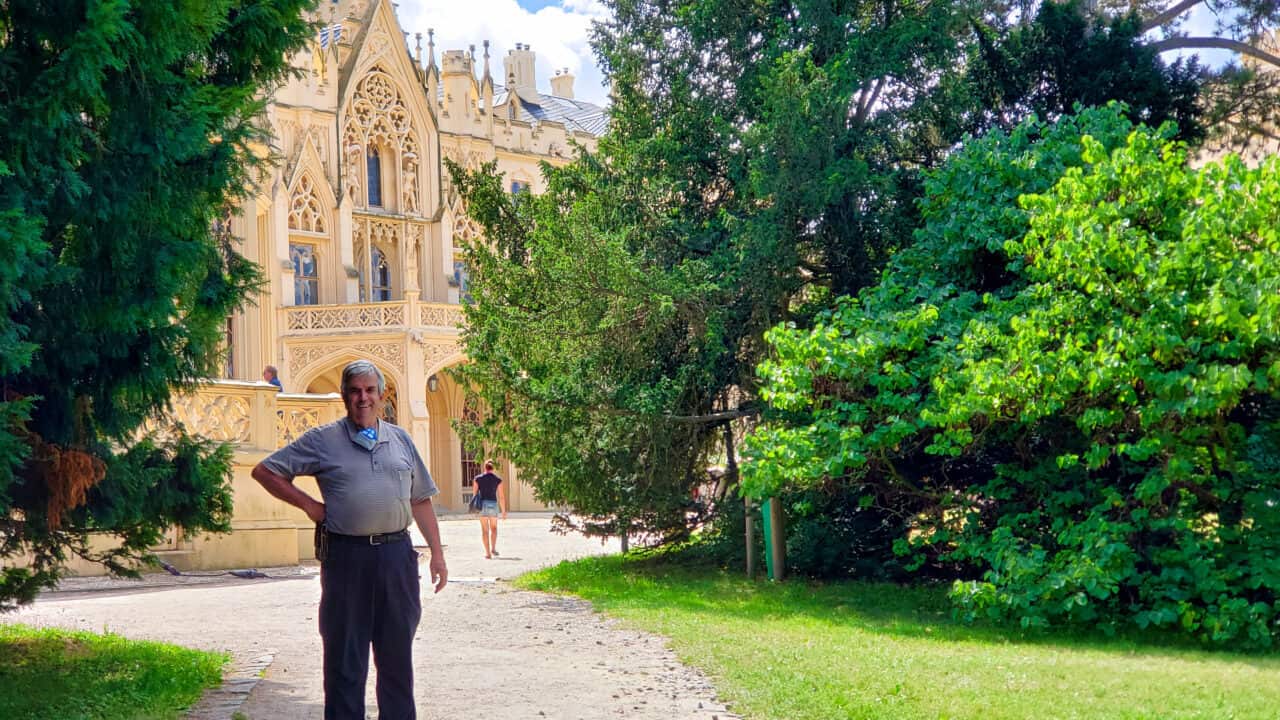
Instead of bringing you up-to-date on Czechia and our time here, this entry is about one day only. It was a day when we did a simple ride of about 30 km, mainly on paths through fields and woods. The sights that kept appearing in the middle of the woods were unbelievable. The following day it rained so I decided to use the spare time and try and create a youtube video of what we saw on this single ride. It is only 90 seconds long and you can see it here: A Day Cycling in Czechia
Our main destination, and the furthest point of our ride was going to be the Chateau Lednice. About 3 km or less than 2 miles into our ride, in the middle of the woods, we saw a Roman triumphal arch. It turns out that the building served as a meeting place during hunting rides. It was built in 1803 and was appropriately named the Temple of Diana. It is also known as Rendez-vous which seems appropriate. We had our drone with us and wanted to try and take some pictures from up above. Even though we were in the middle of the woods with no cars allowed, there were just too many cyclists for us to use the drone for long. You aren’t supposed to fly over people and one woman, with no English, managed to point out that we weren’t supposed to be doing this.
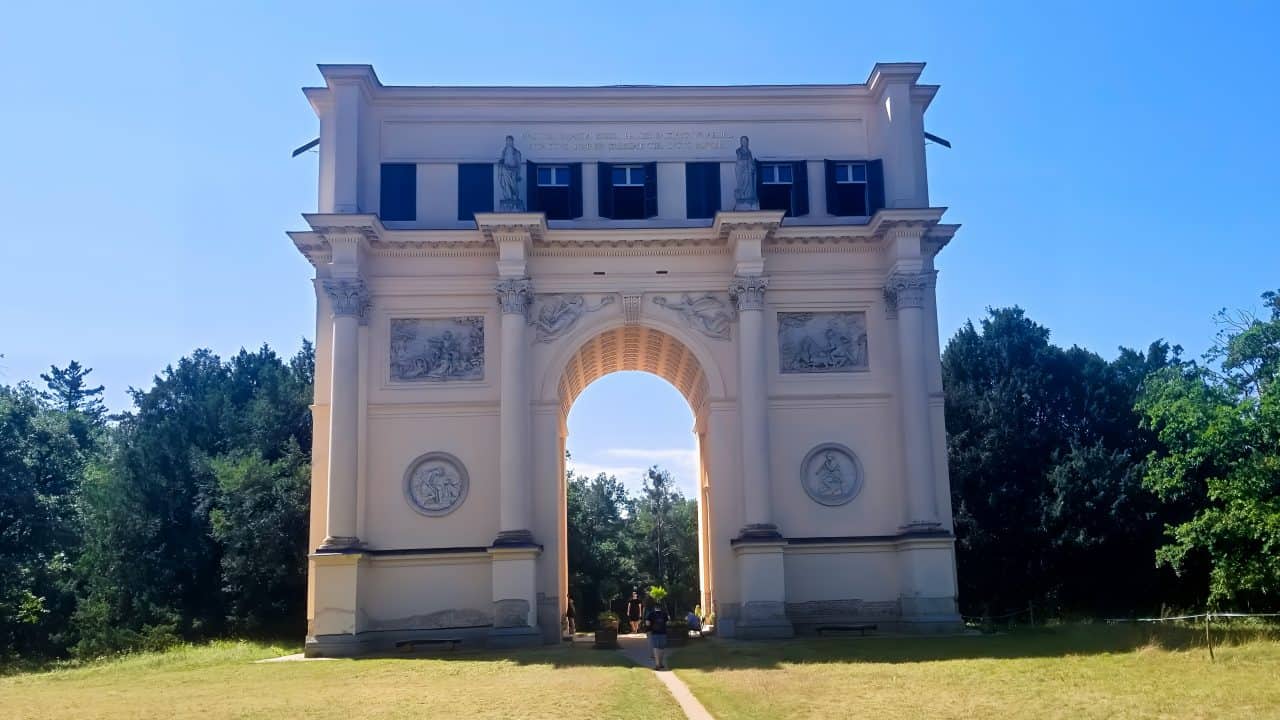
Later, still in the forest, we came upon a triangular shaped chapel with three Gothic arches. Although the chapel was only built in the mid 1800s it was obviously designed to evoke the feeling of antiquity. I read that this it was built in the Neo Gothic style. In the middle is a statue of St. Hubert on a pedestal with angels. Now I did know that Diana was the Greek goddess of hunting but I did not know that St. Hubert was the patron saint of hunters. We had actually ridden through part of these woods on a different path on a previous ride and come across this chapel then. It is a very unexpected site to see in the middle of the forest.
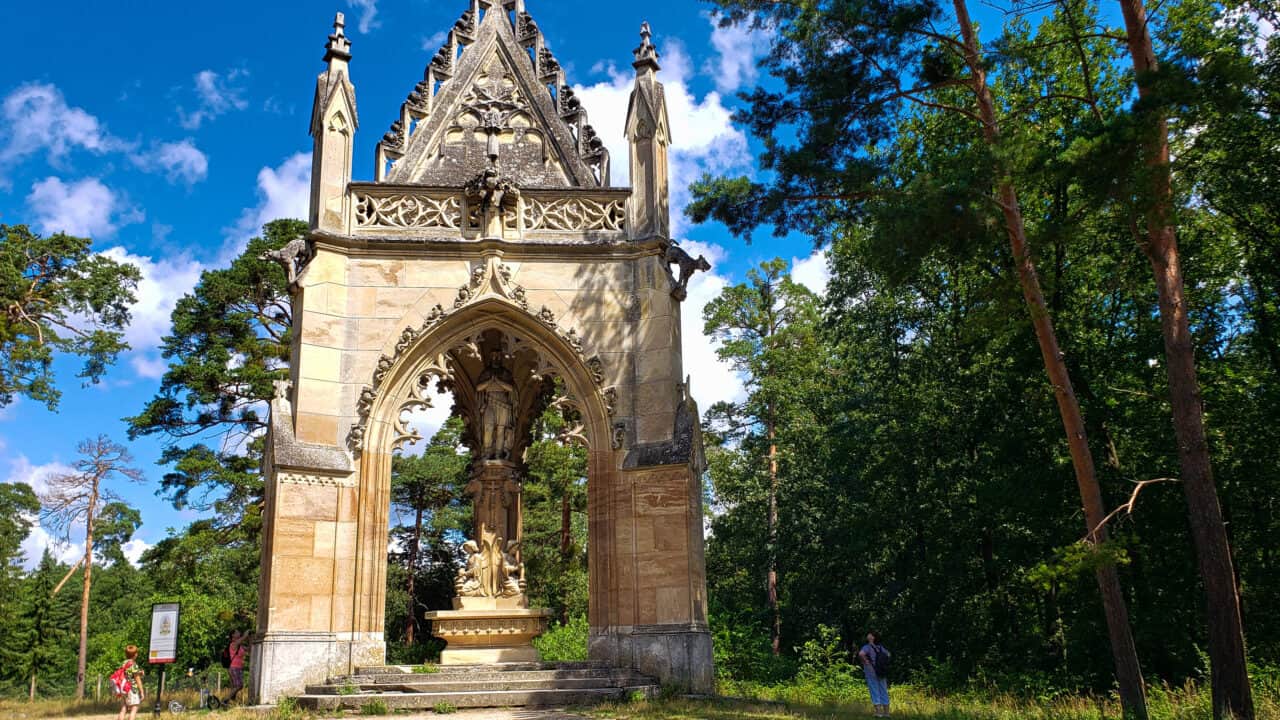
Leaving the forest we saw a large complex that appears to be falling into disrepair. Nový dvůr, or the New Court, is considered to be one of the last monuments built in this area. The construction of this “farmhouse” was part of the planned, man-made, cultural landscape between Lednice, which we were heading towards, and Valtice where we would end our ride. It was built in the 1800s, and was originally used to breed rare merino sheep. Over the years it has been used to breed black spotted Swiss cows, horse, and oxen. After it was confiscated during the Communist regime it was used for animal production and was not well-kept. In the 1980s some restoration work started on the New Court.
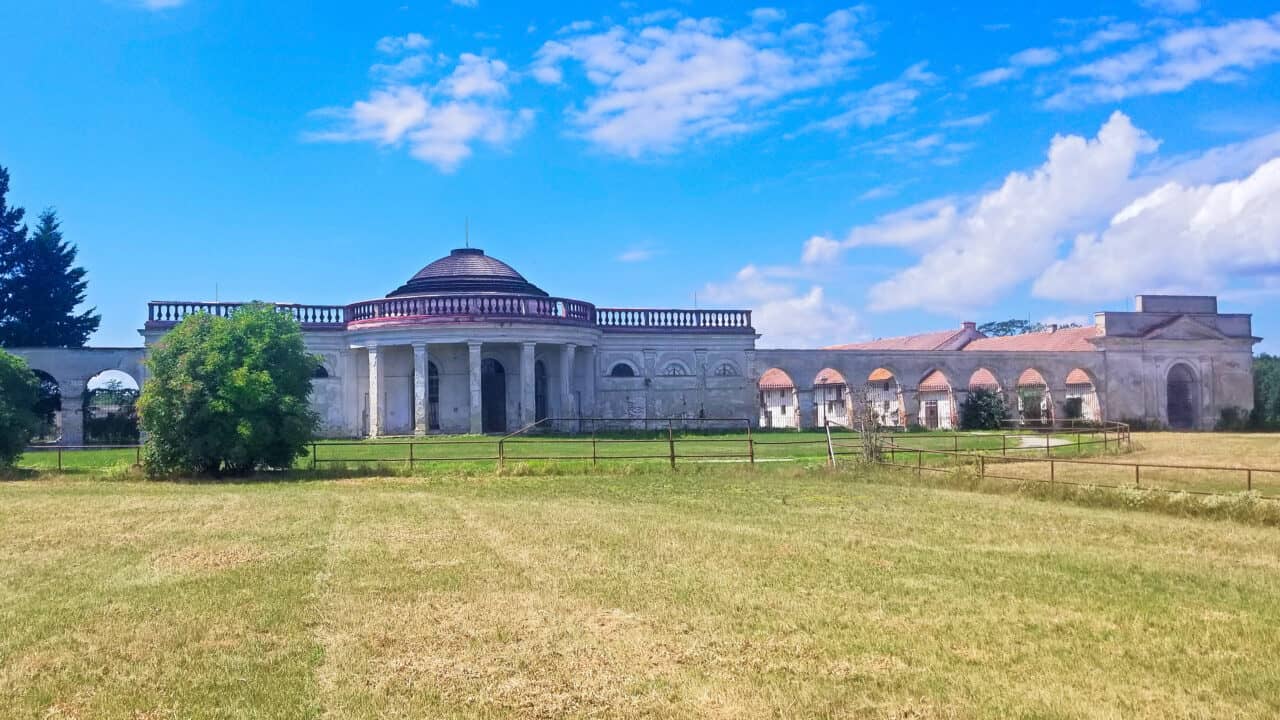
The destination and highlight of the ride was the Chateau Lednice complex. In 2017 Mike and I had driven through Czechia on the way to Budapest where we planned to store our RV for the winter. On that trip we stopped for a couple of nights and toured the Chateau. We planned to return the next day to see the extensive gardens and landscaping. Well it poured rain the following day and as we were running out of time we simply left Czechia. Little did we know that it would take four years for us to finally get to see some of the grounds. Even on this trip, given the heat, we didn’t walk around as much as I would have liked to. When it is hot out, riding on the bicycle and generating our own 20 km/hr wind is much nicer than slowly walking in the sun.
The Chateau Lednice is gorgeous. Today’s look of the Chateau is from the mid-1800s although portions of the Chateau are much older. The Prince of Liechtenstein at the time, decided that Vienna was not suitable for entertaining in the summer. He had Lednice rebuilt into a summer palace in the English Gothic style. According to the internet “The hall on the ground floor would serve to entertain the European aristocracy at sumptuous banquets, and was furnished with carved wood ceilings, wooden panelling, and select furniture, surpassing anything of its kind in Europe.”.
At the moment, the tours are all in the Czech language with English write-ups in the various rooms. This seems to be true at all the historic sites in the area even though they advertise English tours. I wonder if that is because of the lack of visitors from outside Czechia due to the coronavirus.
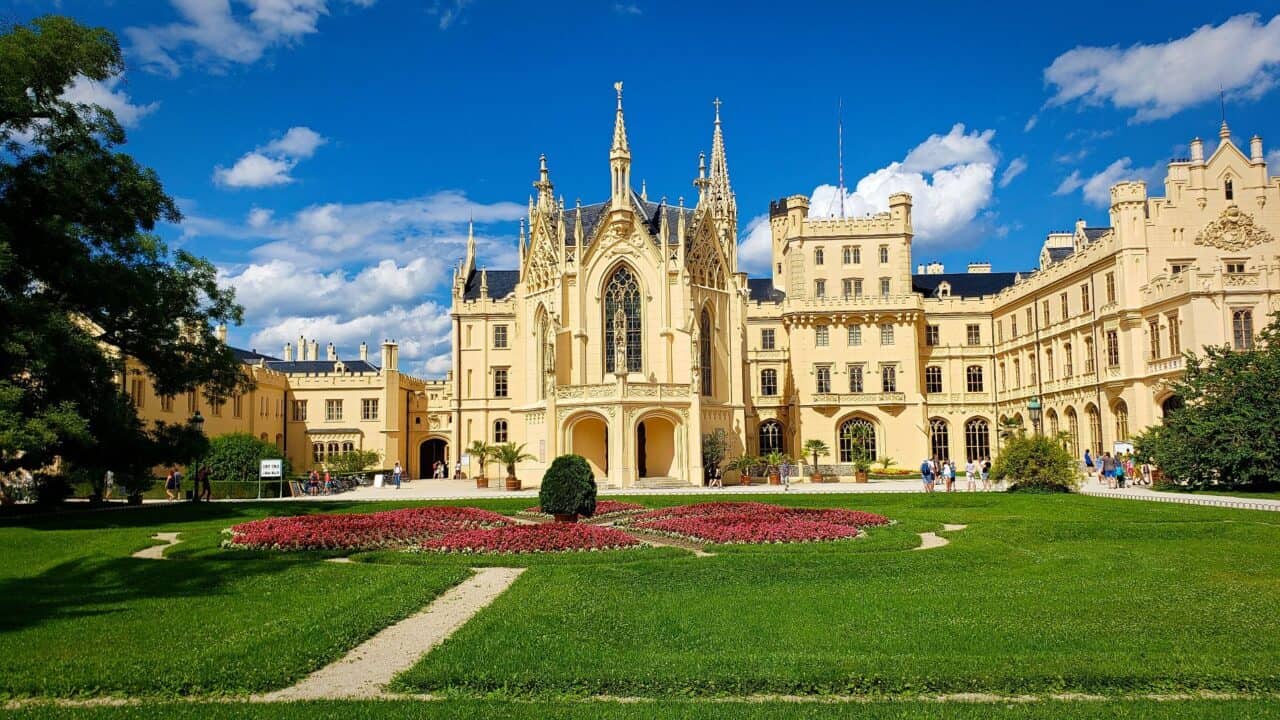
On the grounds of the Chateau is a very tall minaret or The Turkish Tower, built at the end of the 1700s. Apparently “It is an exceptional building of this nature in Europe and with its almost 60 meters it is one of the tallest on the continent.”. There were many other buildings and follies on the grounds that we did not get to see. Our big disappointment is that they don’t allow bicycles in the park at the Chateau. It would have been lovely to ride on the paths all over the property. I am guessing that, as one of the major tourist attractions in Czechia, it is often too busy to intermix pedestrians and cyclists which is really too bad.
At one point on our ride, again in the woods, what jumped out at us but a large, semicircular colonnade consisting of 12 Ionic columns (I had to look that up ? ). This building is known as the Temple of the Three Graces. The main sculpture was made out of a single piece of stone. Rumour has it that “the curves of the goddesses’ bodies allegedly kept the noblemen awake at night, so it was decided that a temple would be built for them.”. This is not what you expect to see when riding through the woods on your bicycle.
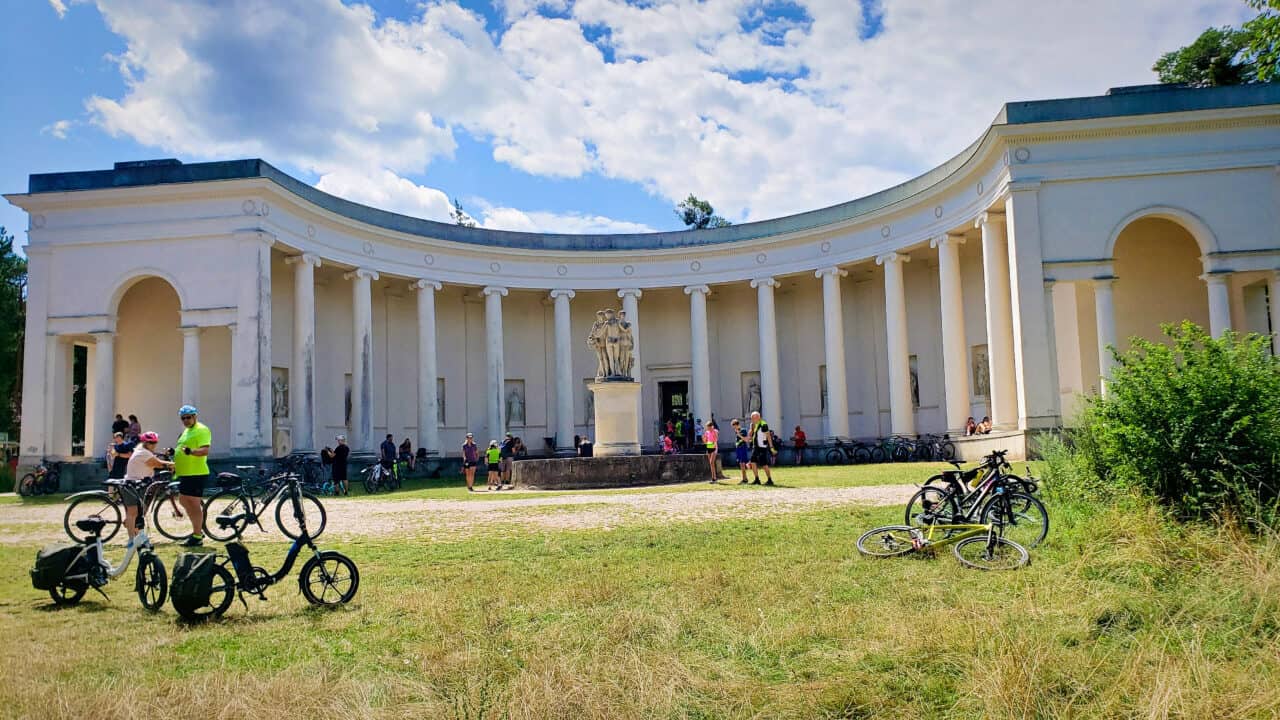
Another thing that we really didn’t expect to see was a kiosk in the woods selling glasses of wine to cyclists. This would never happen in our home in conservative Ontario. This is a huge wine area and almost everything seems centred around wine and vineyards.
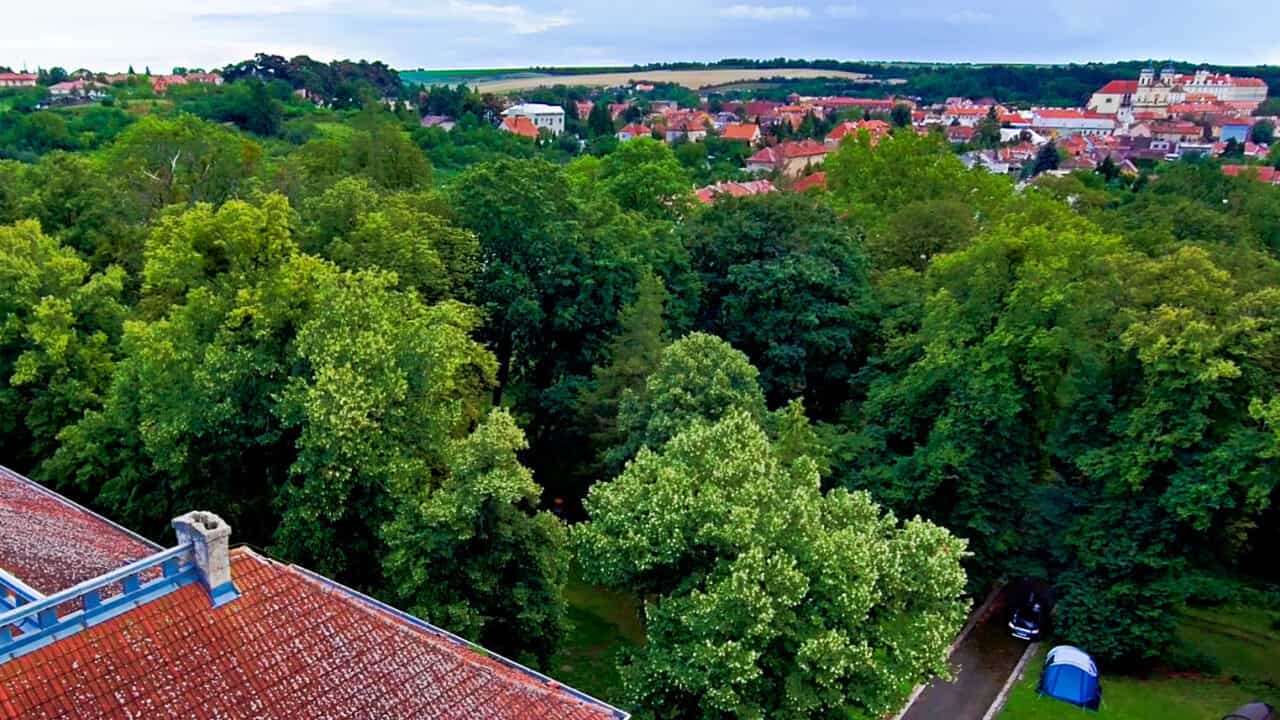
Our last site on this ride was in the small town less than 1 km from where we are staying. The Valtice Castle, which today is a large winery known as Chateau Valtice, was the main seat of the Liechtenstein family. Although Mike and I have been in Valtice many times in the last week, and have wandered around the outside of the Chateau, we haven’t yet toured the interior. We will be staying here for another couple of days and fully intend to take the basic tour before we leave. The picture here was taken with our drone high above our camper. You can see the campground in the front and the town and the castle in the distance.
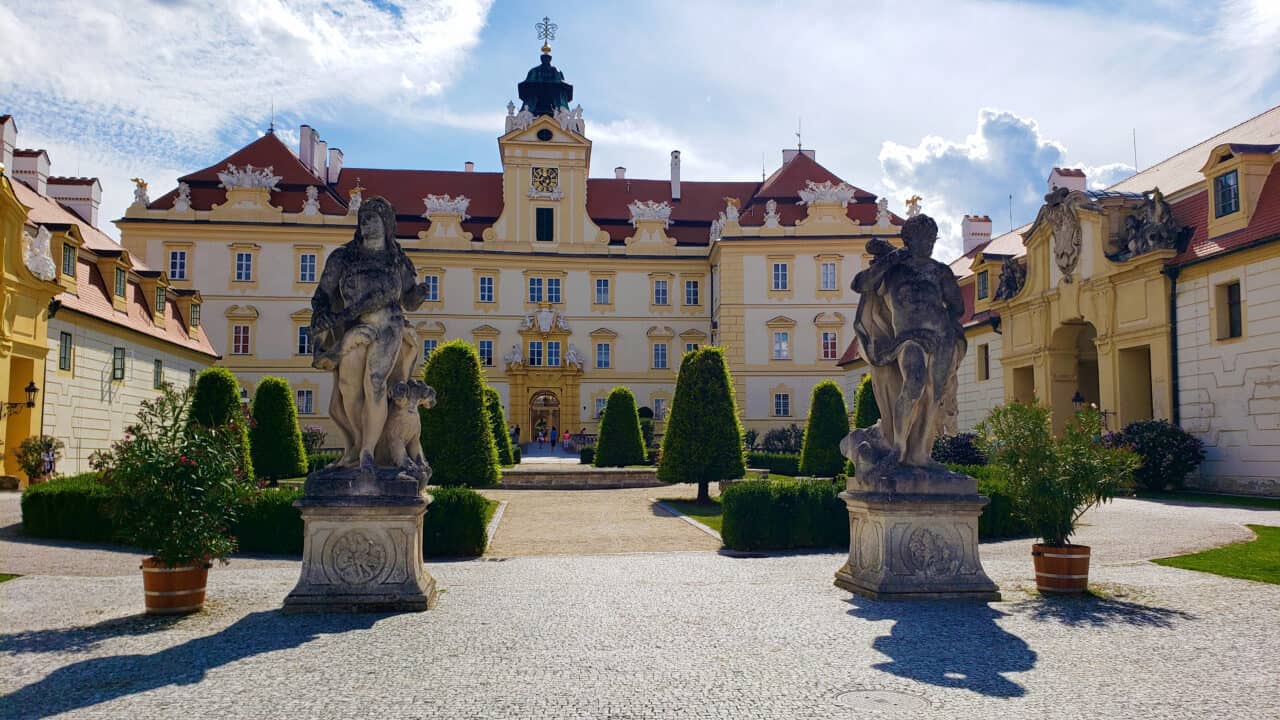
Riding back to our camper completed a pretty phenomenal, one-day ride.
I thought that I would add a little bit of history here at the end and put the area into perspective. Most of the information below is taken right off the internet.
The main residence of the Liechtenstein family was the Lednice-Valtice area NOT the country of Liechtenstein. The area around Lednice and Valtice is an exceptional example of landscape design. At almost 300 km² or more than 100 square miles, it is one of the largest artificial landscapes in Europe.
The House of Liechtenstein acquired a castle in Lednice in 1249, which marked the beginning of their settlement in the area. It remained the principal Liechtenstein residence for 700 years, until 1939 and World War II. The Dukes of Liechtenstein transformed their properties into one large and designed private park between the 17th and 20th centuries.
In 1918 the region became part of the new Czechoslovakia. The Liechtenstein family opposed the annexation of Czech territory by Nazi Germany, and as a consequence their properties were confiscated by the Nazis in 1939. After World War II the family made several legal attempts for restitution of the properties. Post-war, they had passed into the ownership of Czechoslovakia: its Communist regime did not support returning large estates to exiled aristocratic landowners.
After the Czechoslovakian Velvet Revolution in 1989, the Liechtenstein descendants again renewed legal attempts for restitution, which were denied by the Czech state, the present day owner of the properties.
Given that this area is one of Czechia’s major tourist attractions, I can see why they don’t want to return it. On the other hand much of what the Nazis stole has been returned, by the courts, to the original owners if they could prove their ownership. Most of what we hear about are stolen paintings and jewels but are lands and homes any different?
I read an interesting article called “The Stolen European Palaces” https://www.timetravelturtle.com/lednice-valtice-czech-republic/ .
In case you missed it. Here is the very short video summary of this post. A Day Cycling in Czechia

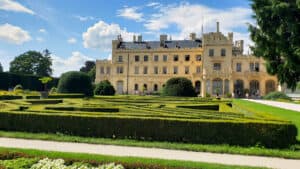
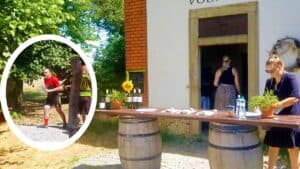
Leave a Reply